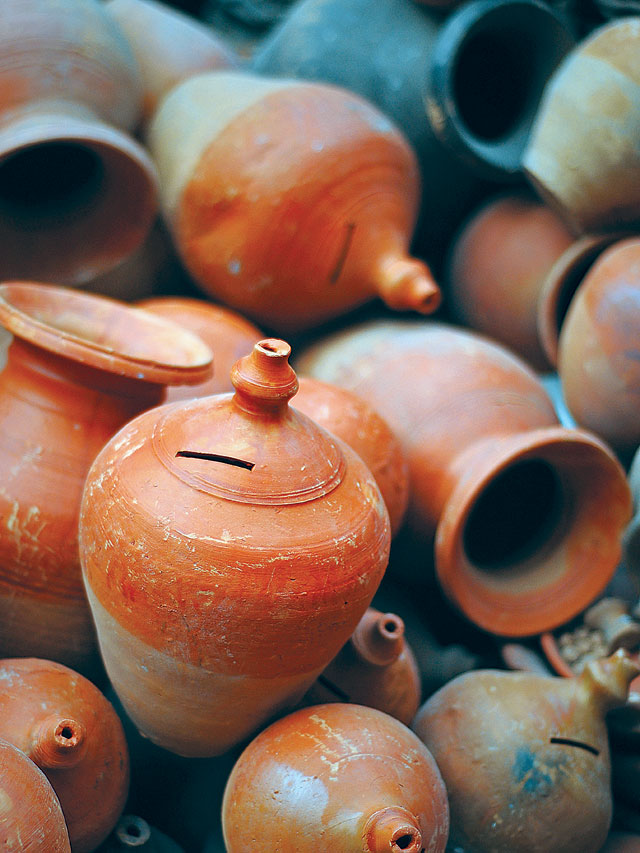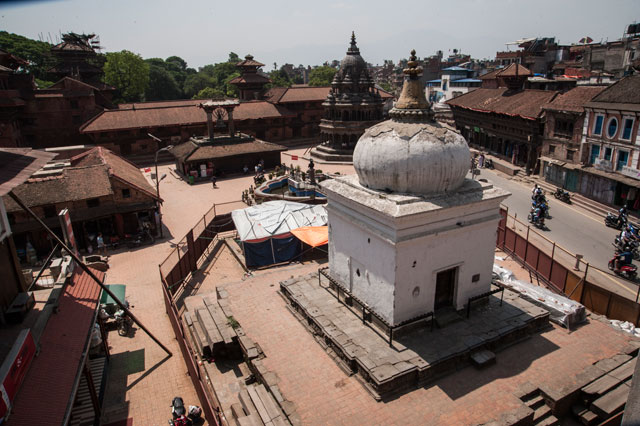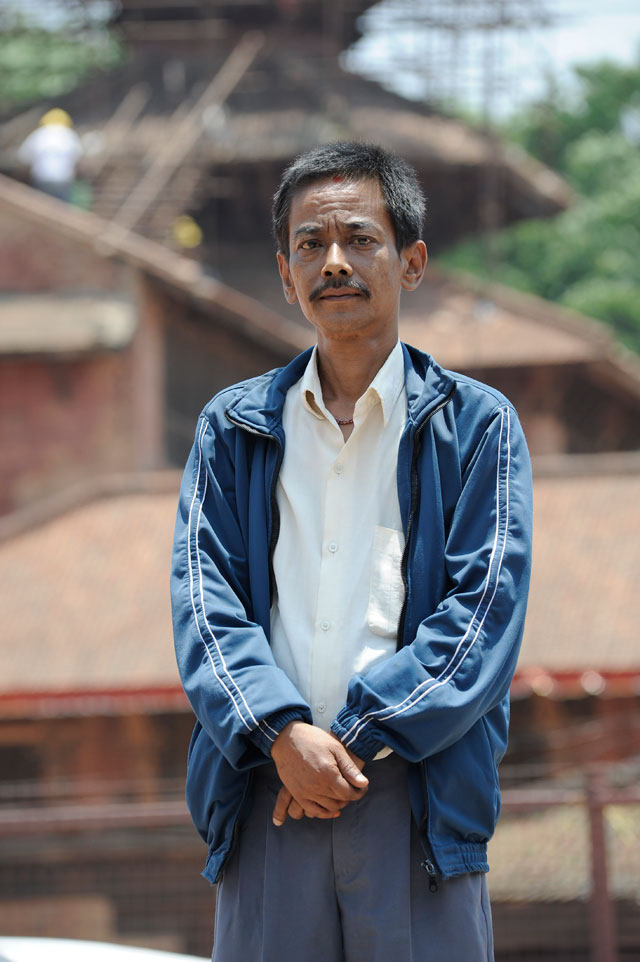The number of heritage monuments destroyed or damaged due to the April 25 Earthquake has been terrible. Restoration is the need of the hour, but artisans are in short supply.
 Until 1970, ‘restoration’ was a word that was in the shadows in Nepal. It was the coronation of then Crown Prince Birendra in 1972 that actually was responsible for making restoration and conservation important issues in the country. In November of 1970, UNESCO consultant John Sanday was asked to make an inventory of Kathmandu Valley’s important monuments. Six weeks later, he reported that since most of the monuments in the valley were in dilapidated condition, a program to restore historical buildings was more in the order of the day. His first project was restoration of Hanuman Dhoka, the focal point of the coronation ceremonies. However, since time was at a premium, work was only done on the main courtyard and the façade.
Until 1970, ‘restoration’ was a word that was in the shadows in Nepal. It was the coronation of then Crown Prince Birendra in 1972 that actually was responsible for making restoration and conservation important issues in the country. In November of 1970, UNESCO consultant John Sanday was asked to make an inventory of Kathmandu Valley’s important monuments. Six weeks later, he reported that since most of the monuments in the valley were in dilapidated condition, a program to restore historical buildings was more in the order of the day. His first project was restoration of Hanuman Dhoka, the focal point of the coronation ceremonies. However, since time was at a premium, work was only done on the main courtyard and the façade.
 Sanday has said in a previous interview, “I think we probably did the first seismic retrofitting work in the country on one of the Hanuman Dhoka towers, and I believe we innovated new ways to waterproof jhingati tiles.” Of about 300 people working on the project, 50 were woodcarvers. Indeed, restoration being a new subject, everything appeared to be innovative, and since wood plays a major role in the traditional Newari architecture of Kathmandu Valley, among which carved windows and doors, as well as toranas and tundals (in temples) are the highlights, woodcarvers were in plenty. Lalitpur is where you would find the country’s best woodcarvers, but woodcarvers were not all that were in plenty in the valley in days gone by; you would also find the best metal sculptors, the best stone sculptors, the best paubha painters, and so on, throughout the valley.
Sanday has said in a previous interview, “I think we probably did the first seismic retrofitting work in the country on one of the Hanuman Dhoka towers, and I believe we innovated new ways to waterproof jhingati tiles.” Of about 300 people working on the project, 50 were woodcarvers. Indeed, restoration being a new subject, everything appeared to be innovative, and since wood plays a major role in the traditional Newari architecture of Kathmandu Valley, among which carved windows and doors, as well as toranas and tundals (in temples) are the highlights, woodcarvers were in plenty. Lalitpur is where you would find the country’s best woodcarvers, but woodcarvers were not all that were in plenty in the valley in days gone by; you would also find the best metal sculptors, the best stone sculptors, the best paubha painters, and so on, throughout the valley.

Artisans in short supply
The word going around in recent times is about the paucity of such artisans nowadays, with the younger generation not taking up their traditional skills as hoped for. Dharma Raj Shakya, Chairman of Handicraft Design and Development Center and Vice President of the Federation of Handicraft Associations of Nepal, says that it has become very difficult to find skilled stone carvers today, and that “many have either left, or are leaving the country.” Well, if so, it is not a good thing to have happened, especially now with so many artisans needed to restore numerous heritage monuments damaged badly by the April 25 Earthquake and its many aftershocks, two of a few were quite big.
 That’s something Mr. Sanu Bhai Biswakarma agrees with wholeheartedly. A stone sculptor of repute, he has worked on many restoration projects for over 13 years. He says, “An acute shortage of skilled artisans is being felt now, with so much to be done to restore many ancient monuments that have either been completely destroyed or partially damaged.” He recounts how he had rushed to the Kathmandu Durbar Square the day after the ‘Big One’. “I was keen to see if the Kal Bhairab shrine had suffered any damage, and though it was sad to see some other priceless monuments destroyed, the Kal Bhairab shrine was safe and sound.”
That’s something Mr. Sanu Bhai Biswakarma agrees with wholeheartedly. A stone sculptor of repute, he has worked on many restoration projects for over 13 years. He says, “An acute shortage of skilled artisans is being felt now, with so much to be done to restore many ancient monuments that have either been completely destroyed or partially damaged.” He recounts how he had rushed to the Kathmandu Durbar Square the day after the ‘Big One’. “I was keen to see if the Kal Bhairab shrine had suffered any damage, and though it was sad to see some other priceless monuments destroyed, the Kal Bhairab shrine was safe and sound.”
 His interest in the shrine is understandable, considering that it had taken him three years (2003-2006) working on its restoration. “It was a venture of Kathmandu Valley Preservation Project (KPVT),” he says. According to him, his association with KVPT began from that time, and he has worked on quite a few of their projects since then. Talking about Kal Bhairab again, he says, “I was quite worried about it after the earthquake, since I have a lot of affection for it.” He states proudly that most of the monuments restored by KVPT did not suffer due to the quake.
His interest in the shrine is understandable, considering that it had taken him three years (2003-2006) working on its restoration. “It was a venture of Kathmandu Valley Preservation Project (KPVT),” he says. According to him, his association with KVPT began from that time, and he has worked on quite a few of their projects since then. Talking about Kal Bhairab again, he says, “I was quite worried about it after the earthquake, since I have a lot of affection for it.” He states proudly that most of the monuments restored by KVPT did not suffer due to the quake.
 Skilled artisans like Mr. Maharajan will be much in demand now, and in the near future, if Kathmandu is to regain its glorious heritage. How much they will be needed can be easily judged from seeing the magnitude of the ruins in the three famous Durbar Squares of the valley. The task ahead is momentous, and at the heart of it all will be the valley’s famed woodcarvers, sculptors, metal-smiths, paubha painters, etc., for in their able and skilled hands will lie the responsibility of restoring the priceless heritage of Nepal. Needless to say, it will be a painstaking effort that will take years and years, since restoration is, after all, not such a simple matter as renovation. As far as possible, the original materials will have to be used, and the method of making also has to be in line with the ancient way of doing things.
Skilled artisans like Mr. Maharajan will be much in demand now, and in the near future, if Kathmandu is to regain its glorious heritage. How much they will be needed can be easily judged from seeing the magnitude of the ruins in the three famous Durbar Squares of the valley. The task ahead is momentous, and at the heart of it all will be the valley’s famed woodcarvers, sculptors, metal-smiths, paubha painters, etc., for in their able and skilled hands will lie the responsibility of restoring the priceless heritage of Nepal. Needless to say, it will be a painstaking effort that will take years and years, since restoration is, after all, not such a simple matter as renovation. As far as possible, the original materials will have to be used, and the method of making also has to be in line with the ancient way of doing things.
This is where our skilled artisans excel, for they mostly use age-old techniques and tools while going about creating beautiful works of art. Restoration of temples and such naturally also means that the role of the architects is paramount, and in this, Nepal is also fortunate to have a bevy of adept conservation architects, two examples of which are Dr. Rohit Ranjitkar, the Nepal Director of KVPT, and Rabindra Puri of Bhaktapur who is responsible for some outstanding restorations in his area as well as in nearby Panauti.
Artisans: at the heart of
restoration
However, all said and done, it is artisans like Mr. Biswakarma and his ilk who are the prima donnas of any restoration work. Though his family has always been in the iron-smithing business, Sanu Bhai found his niche in stone sculpting, which he says is an extremely demanding craft. In his view, there are only five or six stone sculptors of caliber in the valley. He also reveals, “I have put my family background to good use, in that I make all the implements and tools needed for stone carving by myself at our own works.” He also informs that the biggest statue he has sculpted has been that of the 16ft Hanuman in Dudhikot of Bhaktapur. “It took me two years,” he says, adding, “Actually, this was a relatively short time, considering that even 3ft statues can take the same amount of time if you really want good results.”
 Mr. Indra Kazi Shilpakar, a woodcarver of some repute, seconds his views. He has been associated with KVPT for 18 years, and is well known for his mastery in woodcraft. “I have done restoration work on many temple and other monuments,” he says. “The first work I did with KVPT was restoration of the tundals and torana of Ratneswor Temple in Sulimha, Patan. That was some 17 years ago.” One of the more recent works was the restoration of the 18 khwopas (alcoves) around Tusha Hiti (the royal bath) in Sundari Chowk of the Patan royal palace.
Mr. Indra Kazi Shilpakar, a woodcarver of some repute, seconds his views. He has been associated with KVPT for 18 years, and is well known for his mastery in woodcraft. “I have done restoration work on many temple and other monuments,” he says. “The first work I did with KVPT was restoration of the tundals and torana of Ratneswor Temple in Sulimha, Patan. That was some 17 years ago.” One of the more recent works was the restoration of the 18 khwopas (alcoves) around Tusha Hiti (the royal bath) in Sundari Chowk of the Patan royal palace.
Right now, he is busy with the restoration of the domed, drab-looking Bhaideval Temple that is right in front the KVPT office. “It was actually a beautiful pagoda style temple once upon a time, but after it collapsed during the great earthquake of 1934, it was rebuilt as a plain domed structure. We have already been working on its restoration for the last two years, and I have just finished doing its doors. I’ll be working on the windows next.” Seeing as to how not much seems to have changed in its nondescript outlook even after two years, one can imagine that restoration must be a pretty time-consuming and painstaking task.
Mr. Shilpakar is also concerned at the lack of enough artisans today. Like Mr. Biswakarma, his observation is that not many of the younger generation are keen on continuing their traditional family vocations. However, he is somewhat fortunate in this regard, in that his son, 34-year-old Indra Prasad, has taken up the family mantle, and is now an experienced wood carver himself. In tune with the changing times, he has a Master’s degree in Contemporary Sculpture and a B.F.A. in Fine Art Studies. He mentions that he and his father have done a fair amount of restoration work on many of the valley’s patis (public resting places). He has a very high opinion of his granduncle, who he says had tremendous talent. The senior Shilpakar agrees, and admits that, indeed, his thulo buwa (father’s elder brother), had inspired him to become a wood carver. “He passed away some five years ago, but when alive, he continued to do wood carving work well into his late eighties.”
As far as artisans like Mr. Biswakarma and the Shilpakars are concerned, public acclaim is not lacking, even if they may not be totally satisfied from the financial angle. But, in the case of artisans like Mr. Biswa Jola Rathore of Bhaktapur, even public acclaim is not in their fate, even though what they do is make masterpieces. Mr. Rathore is highly skilled at making wax sculpture. Yes, the very same sculptures that are the origins of all those beautiful metal statues one sees in temples, monasteries, and other places.
As is well known, metal sculptors here use the ‘Lost Wax’ method when making statues. It entails, first of all, the making of wax models. Not just any model, mind you, but really, really fine wax models, for from one such masterpiece will arise a large number of impressive metal statues. “We wax sculptors are always in the background,” laments Mr. Rathore with a wan smile. Apparently, the financial remuneration is not good either, for he admits, “My son is studying now. I don’t think I will encourage him to continue what I have been doing. There’s not much satisfaction, both artistically and financially.”
Well, from all that such artisans of high repute say, one has to be concerned that the country may have a difficult time in bringing back the old glory of the valley soon. Since so many important heritage monuments have been destroyed or damaged by the April 25 Earthquake and its numerous aftershocks, the work at hand is extremely challenging. The need of the hour is to restore them as quickly as possible so that the Durbar Squares and other heritage sites of the valley can once again proudly welcome visitors from around the globe. And, therefore, our skilled artisans, who are at the very heart of any restoration work, have to be doubly active now, even if there are a precious few left.










